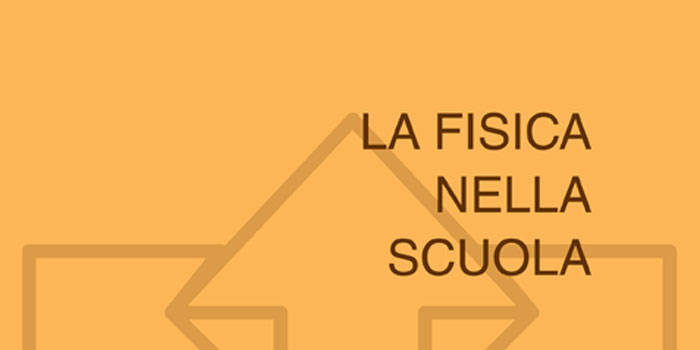Articoli rivista
Cultura
 Anno XXVI - n.2 - aprile/giugno 1993
Anno XXVI - n.2 - aprile/giugno 1993 Esperimenti di avanguardia con la luce di sincrotrone: dalla spettroscopia alla diffrattometria
This paper describes some applications of the synchrotron radiation emitted by ELETTRA a third-generation dedicated synchrotron built near Trieste. ELETTRA will be a very strong source of well collimated X-rays. Among the uses of such radiation, Super-ESCA spectroscopy will allow very fast chemical analysis of surfaces, […]
 Anno XXVI - n.1 - gennaio/marzo 1993
Anno XXVI - n.1 - gennaio/marzo 1993 Geometria dello spazio-tempo e paradossi relativistici
The classical skier paradox is revisited, with the aim of showing that a strictly geometric approach (i.e. one that makes no use of Lorentz transformations and the like) is more apt at revealing the true nature of the physical problem being studied. […]
 Anno XXVIII - n.2 - aprile/giugno 1995
Anno XXVIII - n.2 - aprile/giugno 1995 Giorno solare vero e giorno solare medio: misura del tempo con una meridiana
Because of the change of Earth’s revolution velocity, true solar time shows small periodic fluctuations compared with mean solar time, measurable with watches. Studying the Earth’s motion we can calculate this time difference (known as the equation of time) and moreover we can understand how sun-dials marking true solar time work. […]
 Anno XXIX - n.4 - ottobre/dicembre 1996
Anno XXIX - n.4 - ottobre/dicembre 1996 I cambiamenti concettuali nella chimica dopo l’avvento della meccanica quantistica
Although the methods of quantum mechanics may be usefully employed in studying the physics of molecules, they are unable to solve some typical chemical problems such as predicting the outcomes of new synthetic processes. The reason for this is the lack of a satisfactory quantum mechanical description of the time evolution of transformation processes in complex systems. […]
 Anno XXIV - n.4 - ottobre/dicembre 1991
Anno XXIV - n.4 - ottobre/dicembre 1991 Il caos deterministico
The phenomena of deterministic chaos and fractal geometry are described in a simple and “naive” form, with the main purpose of stressing the great significance of theory in the context of deterministic chaos and pointing out the role of the mathematical tool in determining a framework capable of describing and explaining many natural phenomena. […]
 Anno XVIII - n.3 - luglio/settembre 1985
Anno XVIII - n.3 - luglio/settembre 1985 Il dialogo Bohr-Einstein 1925-1985
Attenzione: il nome dell’autore è Kennedy, non Kennedi […]
 Anno XXXII - n.4 - ottobre/dicembre 1999
Anno XXXII - n.4 - ottobre/dicembre 1999 Il macroscopio:una versione didattica del microscopio a scansione di forza
We describe an home-made device simulating, at macroscopic level, the behavior of a scanning force microscope, that we suggest to use for didactic purposes aimed at clarify genesis and meaning of the electronic images, frequently found in textbooks. […]